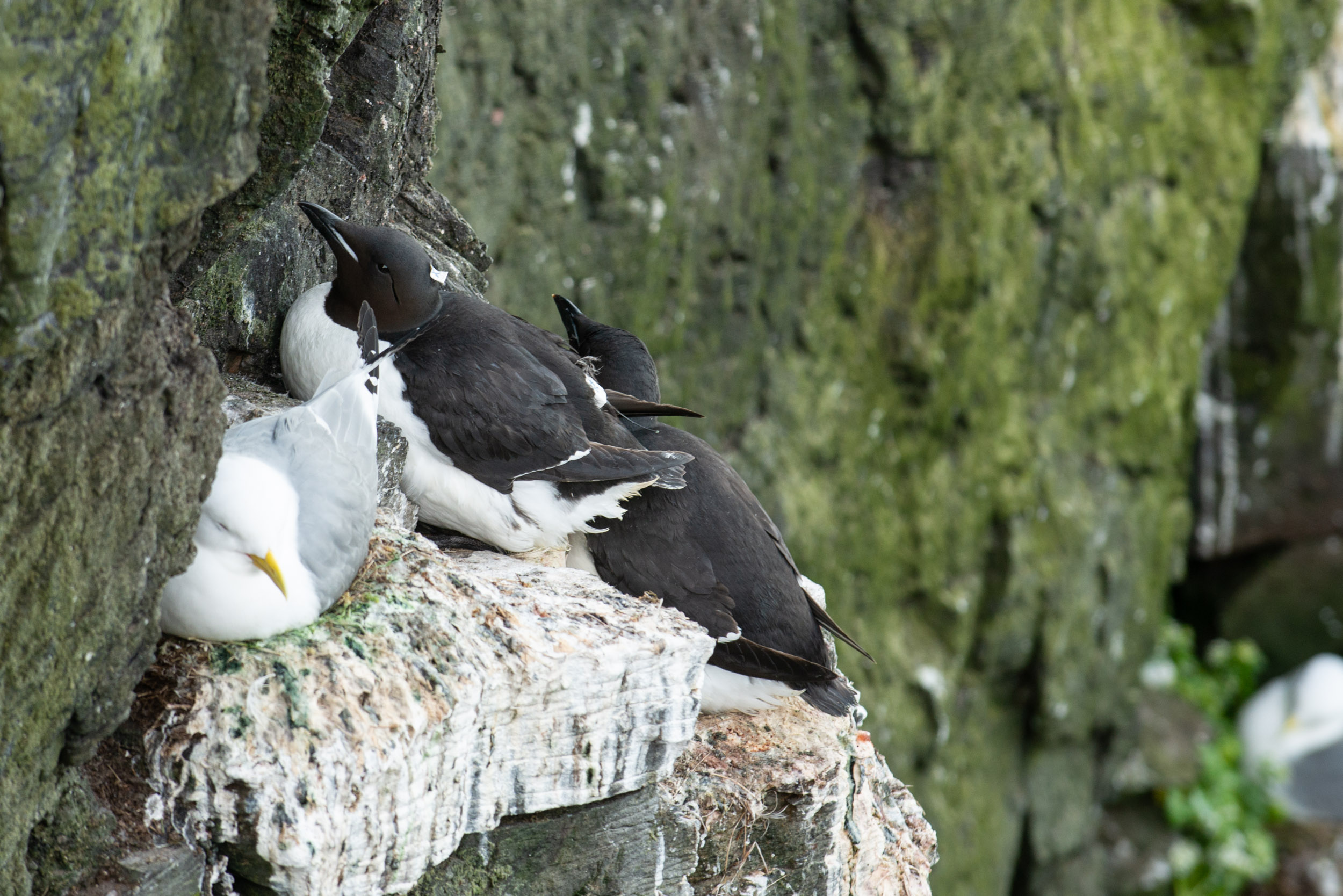Tracking seabird species in Iceland
27 June, 2019
After the initial reconnaissance expedition in 2018, this June Project LOMVIA – part of the NERC Changing Arctic Ocean Programme begins in earnest (read more about last year’s work here).
Over the short summer season, three teams based around Iceland are tracking two species of guillemots – seabirds related to puffins – Common Guillemots (Uria aagle) and Brünnich’s Guillemots (U. lomvia). They aim to investigate where they travel to collect food and discover how climate change and competition could impact these two closely related species.

Zoological Field Assistant, Derren Fox, tells us more about beginning fieldwork at Látrabjarg.
The cliffs of Látrabjarg – a spectacular field site
Our small team – Dr Dr Anne-Sophie Bonnet-Lebrun, Kirsty Franklin, Kayleigh Jones and myself – is based on the most westerly point of Iceland at the impressive cliffs of Látrabjarg. These spectacular 14km long cliffs rise to over 400m from the sea make the research a little challenging at times. Over the next 4 weeks we aim to catch and tag up to 40 birds of each species, equipping them with miniaturised GPS, depth and temperature recorders for a few days at a time. These will allow us to follow the birds’ movements during incubation and brooding of small chicks seeing where they forage, how deep they dive and seeing if there are any differences in how these two species survive during this crucial period of the year.
Settling in and starting the science
After arriving at our home for the next month, we settled in and explored the cliffs looking for suitable sites for catching the guillemots (easier said than done we found out!). Safely roped up with climbing gear, the birds are caught using long 13m noose pole. Working on the edge of the cliffs, trying to catch a guillemot as you stare down at the sea below takes some nerve. Luckily, we have plenty of experience between us and were soon bringing birds up to be fitted with their miniature tracking devices. Each of the tracked birds are marked with tape on the crown of their heads, so we can identify them on the breeding ledges when the time comes to collect the devices.
After a few minutes the birds are released. Once their partner returns and they are relieved of their incubating or brooding duties, they are free to forage for themselves and collect some valuable data for us.

Whilst two members of the team carrying out the careful tagging process, the third is tasked with defending the birds nesting ledge from the ever present threat posed by the glaucous gulls that constantly patrol the cliffs in search for an easy meal. Once the tagged bird has safely returned to its egg or chick the whole process begins again.
The fun really begins when we have to re-capture them. Catching them once is challenging; catching them again is a whole different experience as they know what we are up to and become adept at avoiding the attentions of researchers with long catching poles. By the time we return home from this expedition we will all be dab hands at hook-a-duck at the next county fair!
The samples we collect this summer from here and the other sites around Iceland will give more information on these birds and help us to predict the potential impacts that climate change could have on these declining species.
That’s all for now from the Látrabjarg team, until next time